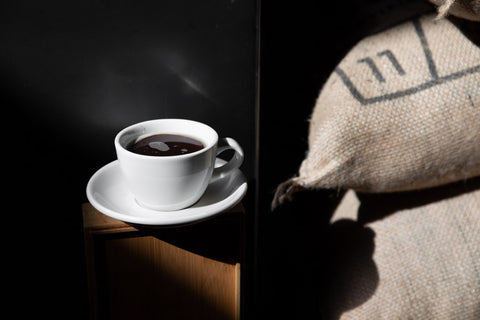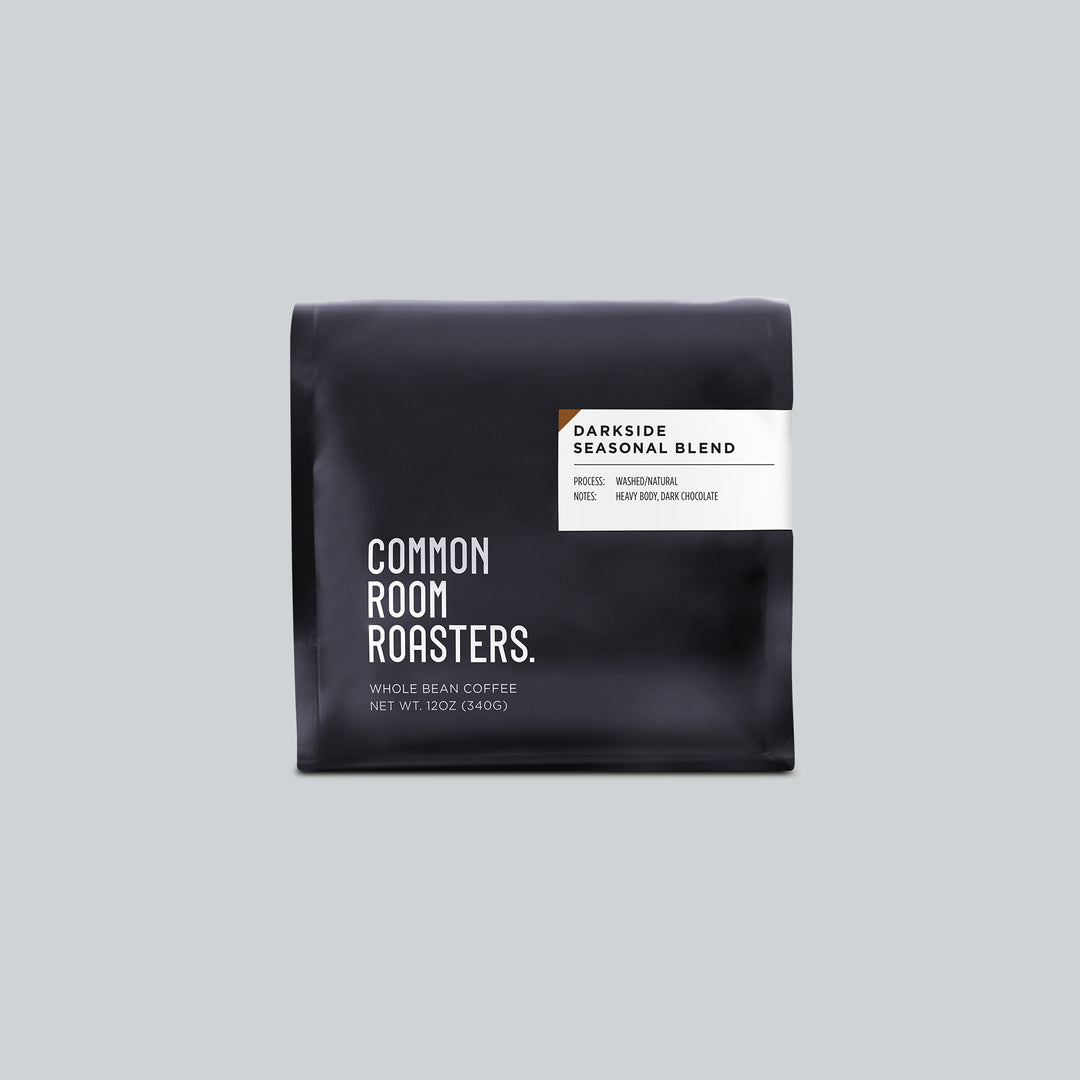Coffee Flavors - In-depth Guide To Flavors & Our Tops Picks

Content
I’m sure we can all agree with David Lynch when he said that “even bad coffee is better than no coffee at all.”
Good coffee, though, is what makes life worth living! And what exactly makes coffee good? The flavor. But most of us are flavor illiterate; “good” or “bad” isn’t enough when describing the complexities of coffee. Learning about coffee flavors can help us refine our tastes and shop for coffee that is better suited to our particular tastes.
From the rich, decadent French vanilla to the sweet, fruity notes of a Columbian blend, the world of coffee flavors is as varied as it is intriguing. For many, the complex characteristics these flavors bring to our taste buds are a big part of what makes drinking coffee such a delightful experience.
So in this article, we’re going to explore flavor notes in-depth. We’ll explain exactly what they are, how to navigate them, and share a comprehensive list of some of the most common flavor notes there are.
What are Flavor Notes?
Coffee is coffee. But, not all coffee is made equal. Not all coffee beans are made equal, to be more specific. There are many different coffee subspecies; each of these will have a unique flavor profile with different tasting notes to other coffees.
Think of wine: each bottle offers a different experience. Blueberry flavors, maybe a delightful red currant aroma. The same thing happens with coffee!
A flavor note is a small part of a coffee’s flavor that can easily be singled out. Flavor is incredibly complex, so describing it as a whole, with just one word, just can’t ever do it justice. Instead, we use flavor notes in addition to aroma.
In the next section, we are going to present and explain some of the most common flavor notes you can find in coffee.

Utilizing a Coffee Flavor Wheel
For those who are interested in flavor, here is a very helpful tool . It is a “flavor wheel”, which shows different flavors, and displays the intensity of flavor and aroma. It is immensely helpful when trying to find the words for the flavors we find in our coffee.
The idea behind the flavor wheel is for us to start identifying something from the innermost part of the wheel, where the most primal flavors/aromas are. Then, each one gets most specific depending on its qualities.
Note that coffee flavors are not the same as coffee flavoring, which is artificial and doesn’t have much to do with the coffee itself. These are added flavors that can be enjoyable—but don’t have as much merit as the natural and delicious flavors of coffee.
So this is not an article about popular flavored coffee, but about coffee flavors. Or coffee flavor notes, to be more precise.
Coffee Flavors
One of the most popular coffee flavors, especially during the fall season, is pumpkin spice. A blend of cinnamon, nutmeg, ginger, cloves, and allspice, it's a taste that is as warm and comforting as the season itself. Mixing pumpkin spice flavor into your coffee can transform a regular cup into a festive treat that will awaken your taste buds and bring an extra layer of joy to your coffee drinking experience.
There's a whole world of coffee flavors out there to explore, catering to a variety of taste buds.

If you take a look at the flavor wheel, you’ll notice it goes from the most general flavors to more specific ones; that’s how you should always approach it. And that’s how we’ll do it here! Each general flavor can derive in many different flavor notes.
For example: fruity → dried fruit → raisin.
The five most important ones in coffee are bitter, sweet, floral, fruity, and roasted.
Sweet
Sweet flavors are some of the most appreciated in general culture. Sweet is often a synonym of good-tasting, so anything sweet holds great value in food and drink—coffee is no exception. Coffee beans have sugar in them, which are caramelized when roasted.
Although there are exceptions, a lot of the sweet flavor notes in coffee have to do with the roast, not with the coffee bean itself.
The main subcategory of sweet flavors we encounter in coffee is brown sugar; “A rich, full, round, sweet aromatic impression characterized by some degree of darkness.”
Brown sugar can be broken down to:
-
Caramel/caramelized : the flavor achieved by cooking sugar. You will encounter this flavor more in medium roasts . This Venice Blend is a perfect example, a medium roast that is fully developed which helps bring a lot of that caramelized flavor note to the surface.

-
Molasses : molasses is a sweet product made (usually) from sugarcane. It is sweet, viscous, and dark. You will find this flavor note in medium-dark roasts.
- Honey : you’re already familiar with this one. Good ol’ honey, a valued flavor in coffee.
Now, of course, depending on what other tasting notes your coffee has, you can end up with other unique combinations. If your coffee has fruity notes and a certain pungent acidity, it could be a pineapple tasting note. Or if it’s very sweet, has a slight sourness, and some bitterness, it could be cherry . The combinations are endless!

A delicious combination of sweet and fruity flavor notes: sweet tropical fruit.
Bitter
Probably the one flavor that most people think of when they think of coffee. Why is coffee bitter?— because of caffeine!
Caffeine, the substance, is inherently bitter. Because coffee is a food that contains a higher amount of caffeine, it is thus quite bitter. (There are other foods that contain caffeine naturally, like maca or tea)
However, bitterness is an asset in all foods. A little bit of bitterness brings balance and can be enjoyed—as long as it’s not overpowering.
You won’t find bitter in the flavor wheel, except at the very end of “other”. But in coffee, bitterness has to be one of the very first flavors you look for: how bitter is it? Does it compliment the drink, or does it overpower other flavor notes?

Roasted
Coffee is actually a roasted seed. There is one legend that attributes the discovery of coffee to the actual act of roasting it:
The story goes that one goat herder in Ethiopia had accidentally discovered that eating the coffee fruit would bestow his energy. This is the most common “origin story” for coffee. But it’s missing the most important part.
As it stands, that story only tells of caffeine, actually. And while caffeine is an important part of coffee, we are here for the flavor above all. So how was coffee, as we drink it now, discovered?
That same pastor brought the fruit to the local priest. The priest listened to his words and was immediately certain that it was a bad thing. So, he took the half-eaten fruit and cast it into the fire.
A few minutes went by, and as the seeds started to cook, the room was filled with that hypnotic aroma of freshly roasted coffee. The priest had a miraculous change of mind, and the word started spreading about this roasted seed.
It is roasty flavor and aroma that started it all. There are different qualities when it comes to roastiness:
-
(Roasted/toasted) Cereal: roasted cereal is a common, and very desirable, flavor note in coffee. One of the most general ones is “malt,” which can be attributable to most roasted grain. But it can get more specific, like roasted barley, for example.
-
Roasty: a word commonly used by experts when describing coffee. Per the flavor wheel: “A rich, full, round aromatic impression always characterized as some degree of darkness, generally associated with attributes such as toasted, nutty, roasted, and sweet.”
- Smoky: a certain flavor achieved when roasting food using wood, or smoking. It is a type of umami flavor and, although rare, it is the mark of a high-quality coffee.
Roasted flavors usually come alive when combined with other flavor notes; you can have roasted spices, or even toasted nuts , another flavor note that is highly desirable. Roastiness by itself is a common flavor—it is the combination of these flavor notes with others that really give character to a coffee’s flavor profile.

Toasted almonds are one of the most complex roasted flavors out there.
Floral
Floral is a flavor note that has as much importance in flavor as it does in the aroma. And, in fact, aroma plays a big part in flavor.
Some say that it is even more important than the flavor itself. Professional coffee tasters have this slurping technique which, although a little grotesque to witness, delivers coffee to the back of the throat, where it can be perceived by our nose better.
These are some of the most important floral flavor notes:
-
Jasmine: hints of jasmine in a coffee’s aroma is highly valued, although coffees with jasmine aroma and flavor are quite rare.
-
Black tea: black tea is technically a leaf—the fermented, dried leaves of the tea tree—but its flavor qualities fall under floral. It is a flavor that greatly compliments that of coffee and coffee with black tea is indeed a thing.
- Rose: a flavor note that isn’t quite as fragrant as jasmine, but has a sweeter, more pleasant quality to it.

Fruity
As we mentioned before, coffee beans are actually seeds. These seeds are inside the coffee cherry. The coffee cherry isn’t a big fruit (and it’s mostly skin, actually) and has a very mild taste that reminds you of apricot, a common flavor note in coffee.
So it follows that coffee, depending on the variety, will have a fruity flavor. Each different variety, blend, and roast will bring out different types of fruitiness:
-
Dried fruit: raisin and prune flavor notes are abundant in coffee, as they are found very desirable. The taste is very pleasant, and prune in particular is a common sight in darker, espresso-style roasts.
-
Tropical fruit : a somewhat vague description, nonetheless very used to describe a coffee’s flavor. Tropical fruit is usually quite acidic—like passion fruit, for example. That’s what you should be thinking of with these kinds of flavor notes.
-
Cherries: when coffee is rather sweet and low in sourness, it will have a delightful cherry flavor, which is very sought-after. Cherry flavor notes make for a unique experience .
- Berries: this category can span many different flavor notes. Berries have this bright acidity, which appears naturally in many coffees. Depending on the depth and sweetness, you can find different sorts of berries like blackberries , wild berries, and black currant. Strawberry and blueberries flavor notes are also possible.
A great example of a coffee featuring not one, but three fruity flavor notes:
How to Navigate Coffee Flavors
Now that you have a better idea of what coffee flavors there are and where on the spectrum they fall, what’s next?
The first thing you can do is identify what flavors there are on your current favorite coffees. If, for example, you are currently loving a coffee that has a lot of caramel or toffee flavor, then you’re definitely looking for sweet flavor notes. Both caramel and toffee also have a roasty quality to them, so that’s something to go on.
If, on the other hand, you enjoy coffee that has berry flavor notes, you want to go look for fruity flavor notes and a pronounced acidity in your coffee.
Basically, you identify the end flavor note and trace it back, then go for more flavor notes that fall in the same category. It’s really easy, and a really fun thing to do, when shopping for more coffee. After all, many people usually either buy the same coffee all the time or blind pick in the hopes that they like it.
On the other hand, it’s usually more helpful to do the opposite. Whenever you encounter coffee you don’t like, start avoiding those flavor notes. We’re more certain about what we don't like than what we do like.

Start Enjoying Coffee Like Never Before
It’s all about the flavor. And there’s a lot of flavor in coffee! Every country has its own trademarked flavor notes, and even within each country, each state has its own flavor note that sets them apart from other growers.
Luckily for us, coffee sales are driven by exotic flavor. The more delectable a coffee, the more likely it is to pop up on the market. This means that we will likely never run out of delicious coffee and will most likely see all sorts of new flavor notes appear in the future.
In the end, becoming flavor-literate is all about training your palate to recognize and identify different flavors. This exercise will not only help you enjoy coffee more, but all other foods and beverages. And remember, the best coffee flavor is the one you enjoy the most.
Welcome to the world of flavor!

















